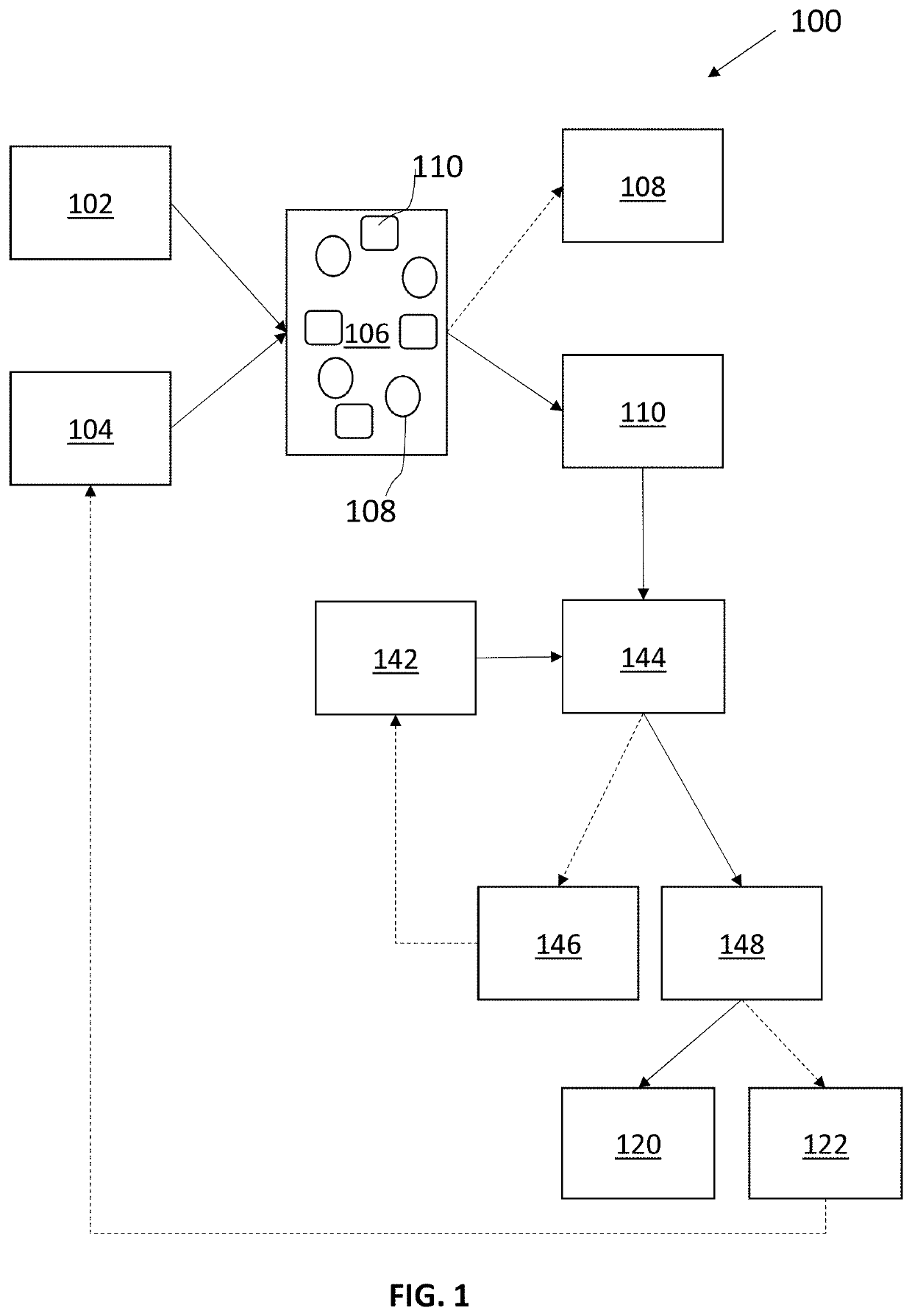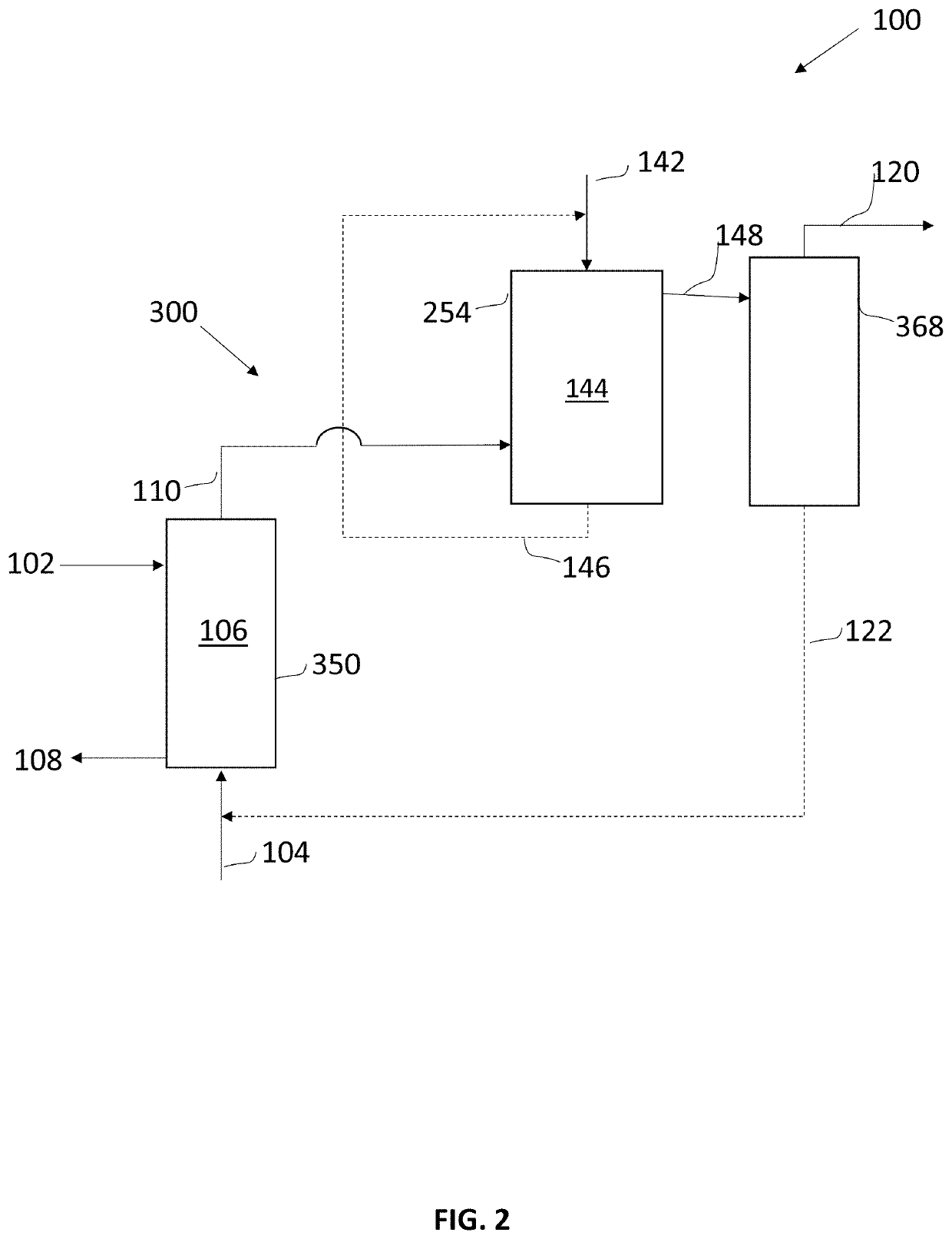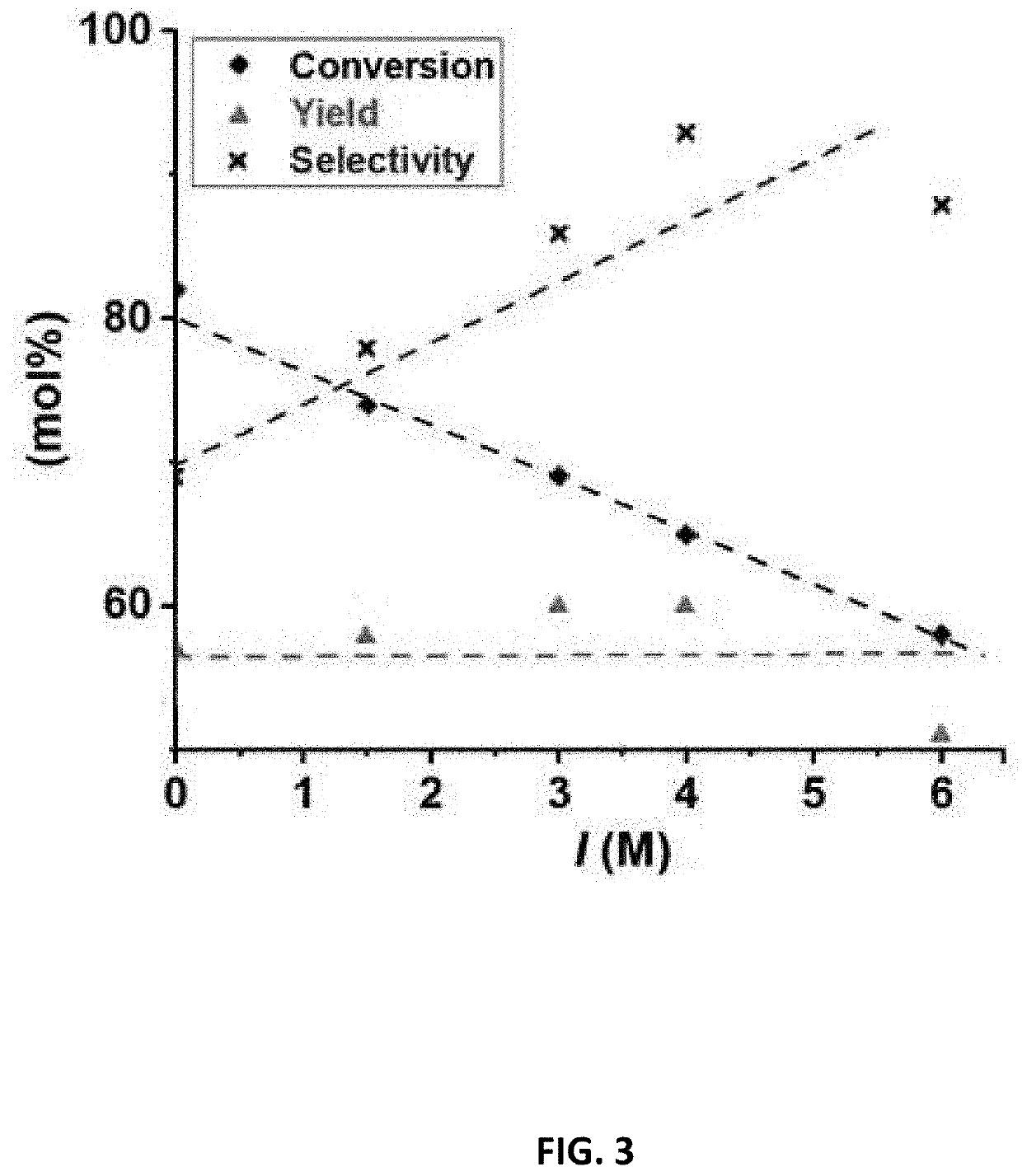Methods and systems for production of furfural
- Summary
- Abstract
- Description
- Claims
- Application Information
AI Technical Summary
Benefits of technology
Problems solved by technology
Method used
Image
Examples
example 1
Xylose Extraction
[0137]In Example 1, nine experiments were conducted with different water-insoluble solvent and pH as shown in Table 3 below. General experimental conditions for these nine experiments include:[0138]xylose-containing solution: 150 mL solution containing D-xylose (350 mM) in water that was acidified to various pH with H2SO4 and[0139]extraction solution: 150 mL solution containing phenyl boronic acid (PBA) in a water-insoluble solvent; the concentration of PBA and type of water-insoluble solvent are provided in Table 3 below[0140]the xylose-containing solutions and extraction solutions of Example 1 were each mixed in a 500 mL Erlenmeyer flask, provided with a cap, and stirred at room temperature for 2 hours, which results in an aqueous phase and a non-aqueous phase in the flasks. Subsequently, the two phases of each experiment were separated and the resulting concentrations of xylose (X) and phenylboronate xylose diester (PBA2X) were quantified in each phase using 1H-N...
example 2
[0146]For this analysis, the reaction of dehydration of PBA2X (a particular type of BA2X as described above) was studied by using conversion solutions that was acidified to pH=1 by addition of H2SO4. The salt in the ionic conversion solutions was Na2SO4 at various concentrations, namely, 0 M of Na2SO4, 0.5 M, 1 M, 1.3 M and 2 M to vary the calculated ionic strength between 0 and 6, which is shown in Table 4 below. For illustration, a solution of 0.5 M of Na2SO4 will have a calculated ionic strength I of I=½*(2*0.5*(+1)2+0.5*(−2)2)=1.5. Table 4 below also shows ionic strength I* which is greater than the calculated ionic strength because I* takes into consideration the ions from the acid in the respective conversion solution using the equation provided herein.
[0147]The conversion solutions with varying calculated ionic strengths were added to a representative non-aqueous phase to form second combined solution to carry out the dehydration reaction. The representative...
example 3
[0153]In Example 3, conversion solutions comprising different salts and / or acids combinations and having varying ionic strengths were examined:[0154]Salt=MgSO4; acid=H2SO4; pH=1[0155]Salt=NaCl; acid=HCl; pH=1[0156]Salt=MgCl2; acid=HCl; pH=1
[0157]The conversion solutions with varying calculated ionic strengths (as shown in Table 5) were added to a representative non-aqueous phase to form second combined solution to carry out the dehydration reaction. The representative non-aqueous phase contained a PBA2X concentration of 320 mM in toluene. The molar ratio of non-aqueous phase to ionic conversion solution was 1:1. The reaction in second combined solution was run for 2 h at 200° C. and autogenous pressure.
[0158]The resulting mixture was analyzed for furfural yield, furfural selectivity, and PBA2X conversion as defined in Example 2
TABLE 5Effect of ionic strength on yield, selectivity and conversionCalculatedExperi-IonicIonicPBAFurfuralmentStrengthStrengthAdded saltConv...
PUM
| Property | Measurement | Unit |
|---|---|---|
| Temperature | aaaaa | aaaaa |
| Temperature | aaaaa | aaaaa |
| Temperature | aaaaa | aaaaa |
Abstract
Description
Claims
Application Information
 Login to view more
Login to view more - R&D Engineer
- R&D Manager
- IP Professional
- Industry Leading Data Capabilities
- Powerful AI technology
- Patent DNA Extraction
Browse by: Latest US Patents, China's latest patents, Technical Efficacy Thesaurus, Application Domain, Technology Topic.
© 2024 PatSnap. All rights reserved.Legal|Privacy policy|Modern Slavery Act Transparency Statement|Sitemap



